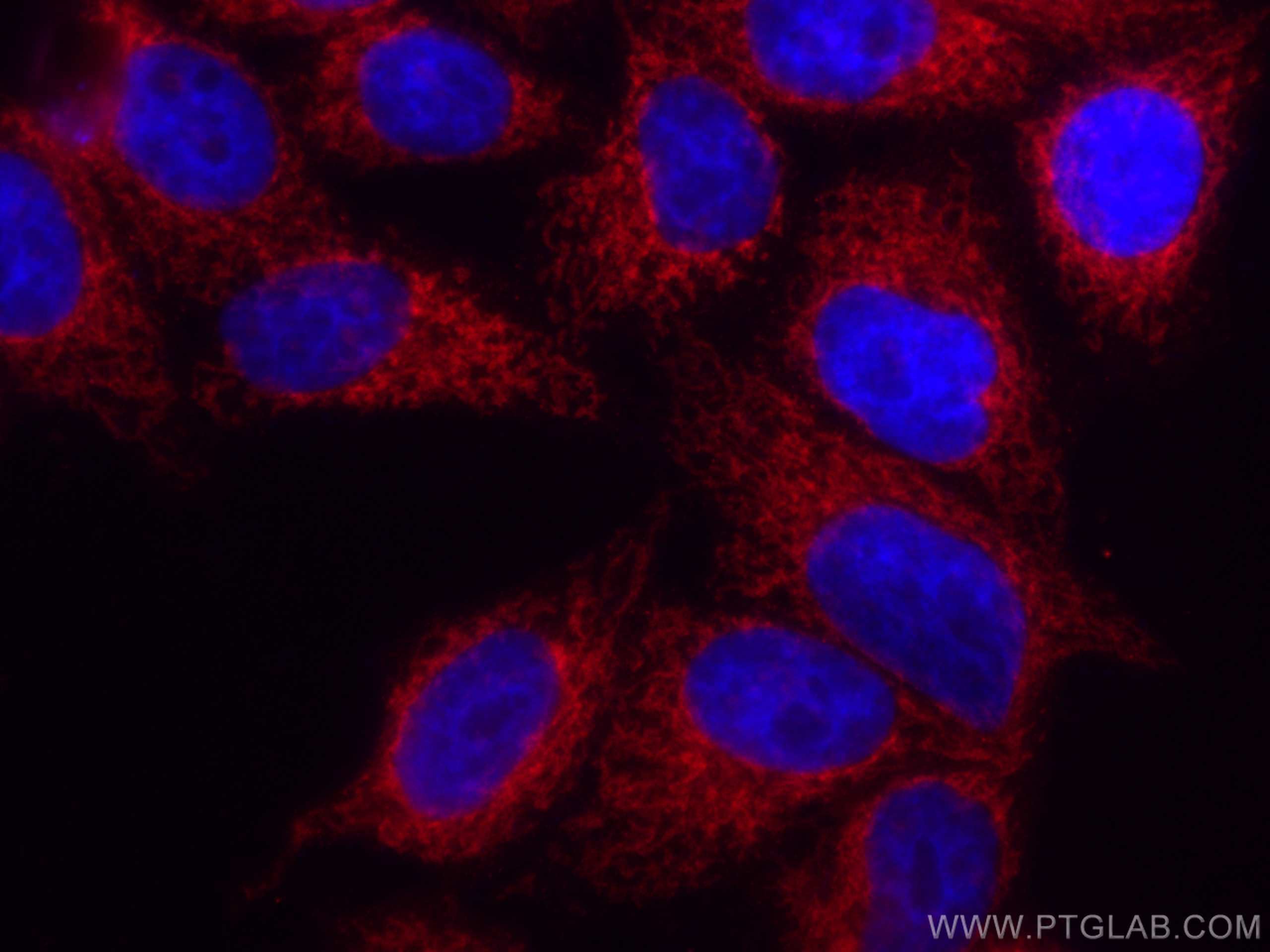CoraLite®594-conjugated FIS1 Monoclonal antibody
FIS1 Monoclonal Antibody for IF
Host / Isotype
Mouse / IgG1
Reactivity
Human
Applications
IF
Conjugate
CoraLite®594 Fluorescent Dye
CloneNo.
2F10E1
Cat no : CL594-66635
Synonyms
Validation Data Gallery
Tested Applications
| Positive IF detected in | HepG2 cells |
Recommended dilution
| Application | Dilution |
|---|---|
| Immunofluorescence (IF) | IF : 1:50-1:500 |
| Sample-dependent, check data in validation data gallery | |
Product Information
CL594-66635 targets FIS1 in IF applications and shows reactivity with Human samples.
| Tested Reactivity | Human |
| Host / Isotype | Mouse / IgG1 |
| Class | Monoclonal |
| Type | Antibody |
| Immunogen | FIS1 fusion protein Ag1409 相同性解析による交差性が予測される生物種 |
| Full Name | fission 1 (mitochondrial outer membrane) homolog (S. cerevisiae) |
| Calculated molecular weight | 17 kDa |
| Observed molecular weight | 15 kDa |
| GenBank accession number | BC009428 |
| Gene symbol | FIS1 |
| Gene ID (NCBI) | 51024 |
| RRID | AB_2883609 |
| Conjugate | CoraLite®594 Fluorescent Dye |
| Excitation/Emission maxima wavelengths | 588 nm / 604 nm |
| Form | Liquid |
| Purification Method | Protein G purification |
| Storage Buffer | PBS with 50% Glycerol, 0.05% Proclin300, 0.5% BSA, pH 7.3. |
| Storage Conditions | Store at -20°C. Avoid exposure to light. Stable for one year after shipment. Aliquoting is unnecessary for -20oC storage. |
Background Information
Fis1 (fission 1) is an integral mitochondrial outer membrane protein that participates in mitochondrial fission by interacting with dynamin-related protein 1 (Drp1). Excessive mitochondrial fission is associated with the pathology of a number of neurodegenerative or neurodevelopmental diseases. Increased expression of Fis1 has been found in Huntington's disease (HD)-affected brain, Alzheimer's disease (AD) patients, and autism spectrum disorder. (21257639, 21459773, 23333625)
Protocols
| Product Specific Protocols | |
|---|---|
| IF protocol for CL594 FIS1 antibody CL594-66635 | Download protocol |
| Standard Protocols | |
|---|---|
| Click here to view our Standard Protocols |


